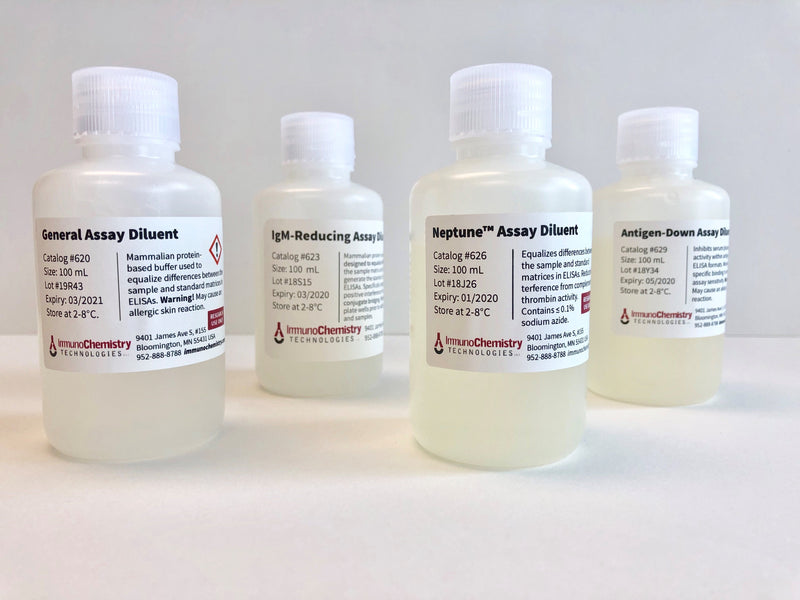Ships: 1-2 business days
- To quickly determine which Assay Diluent formulation is best for the assay, all four Assay Diluents can be run in parallel on the same IgG-coated ELISA plate.
- Determine the initial dynamic analyte detection range of the ELISA curves that were prepared in each of the four different Assay Diluent types.
- Make test spikes into serum samples.
- Read the spiked serum sample wells from each of the four AD-associated standard curves to see which Assay Diluent gives the best approximation of the spike concentration that was added to the serum samples.
- In cases where a high level of matrix complexity interference is not detected, an additional Assay Diluent may not be required to obtain a useful standard curve and derived sample analysis.



